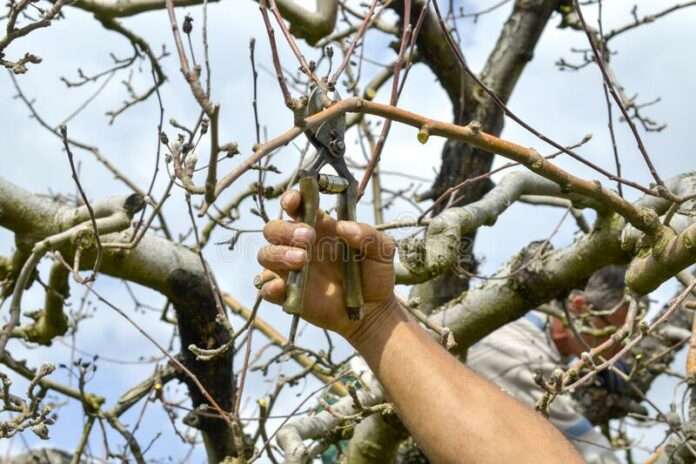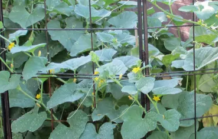Winter garden chores include pruning and shaping of fruit trees. Many people have apple trees in their yard but often fail to prune them. Old, neglected apple trees that haven’t been pruned for several years are often tall, densely branched, unproductive, and may contain a large number of dead branches. Fruit produced on neglected trees are generally small, poorly colored with a low sugar content, and misshapen. (The misshapen fruit are caused by insect and disease pests.) Though trees may be old, structurally sound trees can produce good quality fruit if properly renovated and managed. Pruning increases fruit size, promotes better color development, increases sugar content, and decreases insect and disease problems by allowing better spray coverage and faster drying following rainfall. Pruning also makes it easier to harvest the fruit.
Extensive pruning is the first step in the renovation of neglected apple trees. The primary objectives of pruning are to reduce tree height and to thin out undesirable branches for better light penetration. Complete renovation of neglected apple trees may take 2 or 3 years. Old, neglected apple trees can be rejuvenated by following the pruning procedures outlined below. Pruning is best done in late winter/early spring (late February to early April).
1. Prune out all dead, diseased, and broken branches.
2. Lower the height of the tree by heading back large, upright growing scaffold branches to outward growing laterals. Up to 4 to 5 feet of growth can be removed in one year. If it’s necessary to remove more top growth, spread out the pruning over 2 or 3 years.
3. Remove undesirable interior branches. Prune out the weakest of crossing limbs and closely growing parallel branches. Also, remove limbs growing toward the center, strongly growing upright branches, and water sprouts. (Water sprouts are rapidly growing, vegetative shoots which develop on the larger branches or trunk of the tree. They often form just below a pruning cut.)
4. Prune off low-hanging branches.
5. If additional thinning is necessary, remove weak spindly growth. The amount of pruning will be determined by the density of branches. Prune sufficiently to permit some light to penetrate the center of the tree when in leaf.
Once rejuvenated, only moderate pruning should be required in following years. Prune apple and other fruit trees on an annual basis.
Though apple trees may be old, good quality fruit can be obtained by proper pruning and timely spraying.





